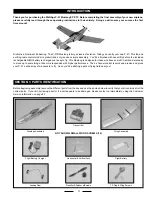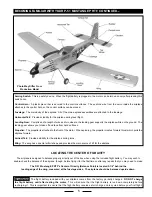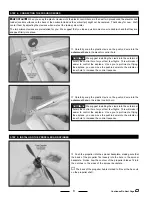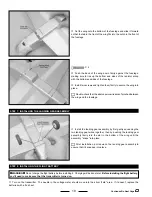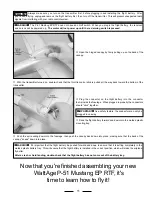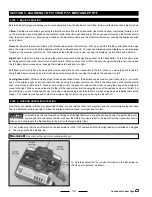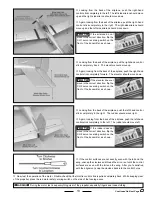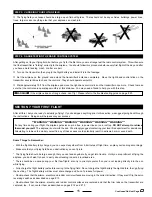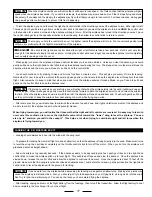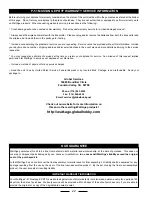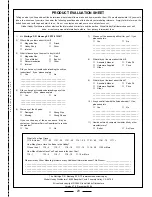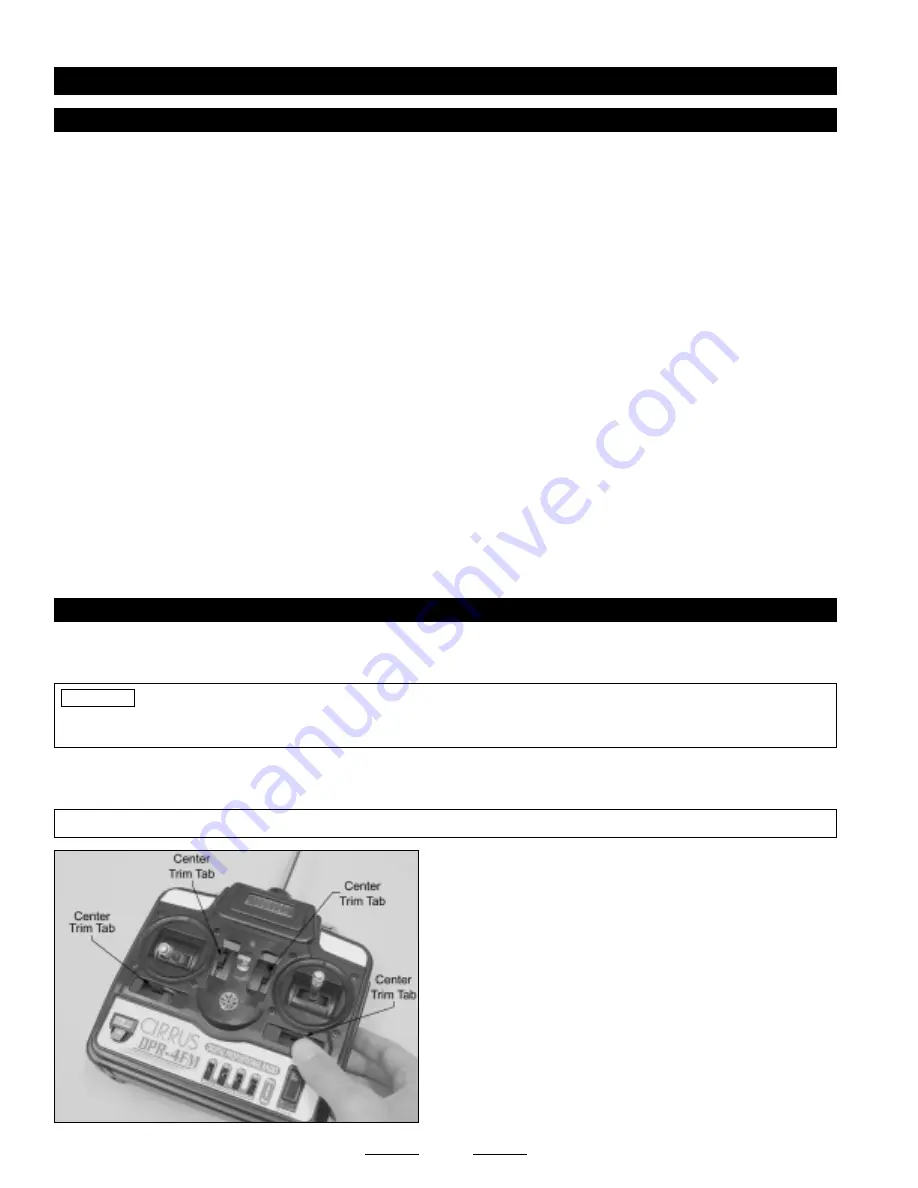
12
Before actually flying your airplane you should understand how the airplane is controlled. Below we list the four basic flight modes:
Climb:
Climbing is controlled by pushing the throttle control stick on the transmitter (the left-hand stick) completely forward to turn
on the motor, then by pulling back on the elevator control stick (the right-hand stick). When you push forward on the throttle control
stick, the motor will turn on. When you pull back on the elevator control stick, the elevator will move up, causing the airplane to pitch
up and climb.
Descent:
Descent is also controlled by the throttle and elevator control sticks. When you pull the throttle control stick all the way
back, the motor will turn off and the airplane will begin to slowly descend. To make the airplane descend faster, you can also push
forward on the elevator control stick. This will make the elevator move down, causing the airplane to pitch down and descend.
Right Turn:
A right turn is done by moving the aileron control stick (the right-hand stick) on the transmitter. This is the same stick
as the elevator control stick, only it moves right and left. When you move the stick to the right, the right-side aileron moves up and
the left-side aileron moves down, causing the airplane to bank and turn right.
Left Turn:
A left turn is done by moving the aileron control stick on the transmitter to the left. When you move the stick to the left,
the left-side aileron moves up and the right-side aileron moves down, causing the airplane to bank and turn left.
Yaw Right and Left:
While not really a flight mode as described above, the airplane can be made to yaw right or left (i.e., move the
nose of the airplane right or left with minimal bank) by using the rudder control stick. This is the same stick as the throttle control
stick, only it moves right and left. When you move the stick to the right, the rudder moves right, causing the nose of the airplane to
move to the right. When you move the stick to the left, the rudder moves left, causing the nose of the airplane to move to the left. For
general flying, you don't really need to use the rudder, unless making a coordinated turn or when doing basic aerobatics that use the
rudder. The rudder is mostly used to steer the airplane right or left on the ground during the takeoff roll.
SECTION 5: LEARNING TO FLY YOUR P-51 MUSTANG EP RTF
STEP 1: BASIC OPERATION
STEP 2: GROUND OPERATIONS TESTING
Now that you're familiar with the four basic flight modes, you can test the radio control system and the motor while seeing first-hand
how the different controls operate to make the airplane climb, descend, turn right and turn left.
You'll want to do Ground Operations Testing until the flight battery no longer has enough power to operate the motor.
This will allow you enough time to become familiar with how the different controls react to the inputs from the transmitter control
sticks and it will prepare the flight battery for its first full recharge before flight.
❑
First, make sure that the on/off switch on the transmitter is in the "ON" position and that the flight battery is installed and plugged
in. The wing should be installed, too.
✦
✦
✦
✦
✦
WARNING
✦
✦
✦
✦
✦
Do not press the red motor arming switch yet.
PRO TIP
❑
Carefully adjust the four control trim tabs on the transmitter so
that they are centered, as shown.
Continued On Next Page
☛
☛
☛
☛
☛
Содержание P-51 MUSTANG EP RTF
Страница 21: ...21...



